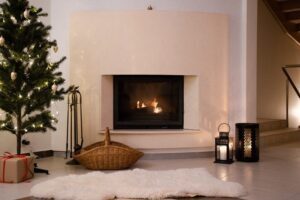Edge beads and angle beads strengthen corners or edges as part of the plaster beading installation, allowing for a smooth finish. Angle beads are utilized in windows, stairwells, and beam corners, whereas edge beads are used on plasterboard edges and other solid surfaces. Plasterboard edging is susceptible to damage, and beading protects it from wear and tear.
This section will look at the many plaster beading materials, their construction materials, and the installation procedure.
Table of Contents
External Plaster Beading Types
Angle Beads:
Angle beads form a smooth edge when plasterboard sheets meet on an external corner, known as corner beads. Clips are metal strips with a centerline and two wings on each side, typically made of galvanized steel or plastic. They’re used to join both layers of plasterboard, producing an ideal corner junction.
Edge Beads:
When a plasterboard edge is next to another material, such as a wooden door frame, an exposed stone wall, or a suspended ceiling, it may be reinforced with beaded glass tiles. Edge beads, sometimes known as stop beads or edge beading, are long, hooked strips that attach to the surface of your plasterboard panel. They assist in protecting your plasterboard edges and allow you to carefully finish a seam, giving your walls a professional appearance. Edge beads are generally supplied in lengths of 3m.
Material Options for Plaster Beads
Angle beads are generally composed of metal and have mesh or larger holes on either side, with a reinforced middle. They can also be manufactured from plastic, having the same form as their metal counterparts.
How to Install Angle Beads on Your Plasterboard Corners
Angle beads can be installed on any drywall using a variety of techniques.
Before installation, you must measure and cut your angle bead. Calculate the length required. Snip or trim it from both sides before breaking it in the middle using a pair of tin snips or strong scissors. Angle beads tend to be excessively open on the edges. It’s good to pinch them closed to maintain them at a 45-degree angle.
How to Apply Edge Beads on Your Plasterboard Edges
Edge beads, like angle beads, should be attached to the plasterboard before the panels are hung on a solid or stud wall. You’ll need to cut them down to the required size using tin snips.
Install beaded edging by holding the back of the longer size against the plasterboard and pressing down on the smaller hook. They’re simpler to straighten because you can just press down on the edge bead against the face of your plasterboard.
Conclusion
To keep your plasterboard walls looking clean, edge beads and angle beads are required. They provide a professionally finished corner. They’re available in plastic or metal, and they both work in the same way. The most effective ways to install them are with screws, nails, strong staples, or plaster. You may plaster your wall carefully after they’re in a place to create a clean corner without a visible bead.
Featured Photo by Ksenia Chernaya: https://www.pexels.com/photo




